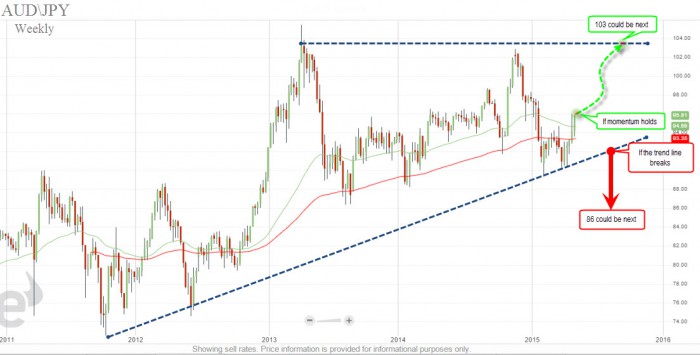Time to Bet on Growth?
After some intense weeks focusing on US data, investors are bracing for what is shaping up to be another intense week in the two other major economic regions of the world, namely Europe and Asia. The global economy faces two, heavily interwoven difficulties which are a cause for concern and likely to dominate the global arena. The first difficulty is inflation, or more aptly, the lack of it. Other than perhaps Brazil and Russia, global inflation has been falling to “freezing levels.” The second difficulty is growth. Investors and policy makers alike are asking themselves, when will growth kick back into gear? Policy makers assess how to react while investors react to whatever policy makers do, whether it’s in the FX space, commodities, equities or bonds. This week, it will be all about growth indicators in Europe and Asia and it will be the reading of those indicators that investors will use to carve out their strategy.
Eurozone on Track for Recovery?
The first growth focus this week will be on the Eurozone. The region has seen quite a bit of turmoil with the Euro experiencing an utter meltdown after inflation in the region essentially evaporated and growth slowed down to a virtual standstill. Yet with upcoming quarterly GDP figures being the first releases of Eurozone growth for 2015, investors’ collective hopes for overshooting the estimates are fairly high. After some upbeat readings from the various PMIs across the Euro region, market movers are gearing up for an improving outlook. The upcoming GDP release of the Eurozone as a whole, and from Germany, especially, as the region’s growth engine, will be the main focus. If growth in the Eurozone does beat estimates, two things could occur: first, it could allow the Euro to recover and then to rise higher after a slight recovery for the past two weeks, and second, the Eurozone’s major indices could recover, as well. The expectations are that the Eurozone’s GDP will grow at a modest pace of 0.9% Year-on-Year (YoY) and Germany’s GDP is forecast to grow 1.4% YoY. If Eurozone growth is higher than 1% and German growth is at or north of 1.5% then investors will conclude that the ECB stimulus is starting to have an effect. And, if indeed the ECB stimulus is starting to have an effect, then perhaps there will be no need for additional stimuli (which tend to weaken the Euro). This could be a sound reason to buy the Euro and hence is likely to dominate sentiment for Euro pairs.
The Sun Rises Again in Japan?
After a nosedive in GDP at the end of 2014, Japan’s economy has been slow to recover. Meanwhile, the additional stimulus many market participants expected from the BOJ in the April rate decision did not materialize. This led investors to anticipate a rather binary scenario; that it was either a fast growth pace that led the BOJ to refrain from further stimulus or it is the BOJ taking a wait-and-see stance to see if the situation deteriorates any further. If growth rises higher than 0.4% annualized then investors will move based on the former scenario: that growth is back on track and there will be no additional stimulus. This could favor the Yen but may weigh on the Nikkei since a higher Yen tends to be negative for Japanese exporters. On the other hand, if growth continues to be sluggish and misses estimates then investors will expect that eventually the slowdown will either force the BOJ to add more stimulus or, at a minimum, to keep stimulus at existing levels for a longer period of time. This, of course, will be Yen negative, and provided that the data is not “too horrible,” it may favor the Nikkei. It is also important to take into account that the upcoming releases of Chinese industrial production and retail sales may add another dimension to developments in Japan given that China is Japan’s largest trading partner. If growth in Japan is weak and Chinese data is weak as well, investors might turn even more bearish on the Yen and vice versa.
Down to Business
Overall, expectations are summarized as follows: in Europe investors are tending to be upbeat on growth and, if they are proven correct, the Euro could rebound, perhaps even at an accelerated pace. In Asia the expectation is for weakness. If this proves correct, the Yen could expect more selloffs with weakness possibly accentuated against its European peers.
On the Plate
BoE Rate Decision (Monday) – In the aftermath of the UK elections, the BoE rate decision will dominate the Sterling. Although the rate is expected to remain unchanged, investors will eagerly anticipate the written sentiment coming from the BoE to get clues on future rates.
German GDP Growth (Wednesday) – If German GDP grows at or above 1.5% YoY it will be Euro positive.
UK ILO Unemployment (Wednesday) – If unemployment falls below 5.6%, it will be Sterling positive.
Eurozone GDP Growth (Wednesday) – The main event for the Euro. If the Eurozone GDP grows more than 1% YoY, it could push the Euro higher.
US Retail Sales (Wednesday) – The main event for both the Dollar and Wall Street. If Retail Sales beat estimates it will mainly favor Wall Street. For the Dollar to move higher, a combination of a retail sales beat and a Eurozone GDP miss is required.
Japanese GDP Growth (Wednesday) – If the Japanese annualized GDP growth fails to surpass 0.4% it will be Yen negative.
Chart of the Week – AUD/JPY

Economic Calendar:

